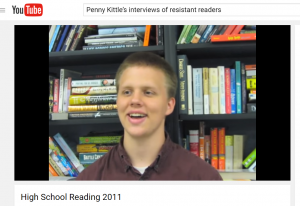
As I think about literacy in our classrooms and what I have observed this year, a few things stand out.
A big one: We must teach our children keyboarding skills.
Though we have a program that students can use at any time, we must be intentional about regular practice if our students are going to become proficient typists. This is important not only because they are now assessed as writers by the state through typed text, but also because we are living in an increasingly digital world. Moreover, when students struggle to type, they are not able to fully express their thinking and often give up before they have written all that they have to say.
The Benefits of Google Docs and Classroom
When students have the ability to use Google Docs with ease, multiple things happen.
- They are able to receive feedback from their teachers easily and respond to it accordingly.
- Collaboration with peers is instant.
- They have a digital portfolio of their writing that will follow them year to year.
Teachers can use Google Classroom for assignments, which makes assigning and collecting student work both organized and incredibly easy. (I so wish I had known about this amazing tool years ago!) At the end of the year, teachers can “return” all assignments to their students, which removes the files from the teacher’s Google Drive. The original assignment stays with the teacher, so it can be used in the future.
Capturing Student Voice with Digital Portfolios
Our district has been working for the past few years on using portfolios as part of telling the story of student learning. We have teachers who have been using just binders, others using just digital tools, and still others a combination of both.
The platform that we have chosen for digital portfolios is Seesaw, and I couldn’t be happier with what this offers students. Within Seesaw, students can upload a piece of digital writing; take a picture of a piece published with paper and pencil; or even use Shadow Puppet to capture multiple pages of published writing (great for our lower elementary students).
The best part is this: They can record themselves reading and reflecting on their writing. Adding a student’s actual voice to a piece of writing is incredibly powerful for both parents and teachers. Suddenly, you can hear inflection and enthusiasm that doesn’t necessarily come through otherwise. When students are asked to reflect, they will often say more than they would if they were writing.
Portfolios Help with Reading Fluency, Too
Similarly, we have used the record function for reading fluency. I have had students ask if they can practice before uploading a recording–a teacher’s dream. Parents hear fluency checks throughout the year, and thus conversations at conferences are easier.
We also use Seesaw for student reflection at the end of texts. These can take any form the student wishes, and often students will take a picture of their books and simply talk about their thinking.
In tandem with Seesaw, we used Screencastify with 5th graders, who were able to create book trailers using Google Slides and then upload the files to Seesaw. (We used this to publish personal narratives with pictures as well!)
Where We Go from Here
We are already busy planning for next year: keyboarding, blogging, Google applications, and more. There are so many possibilities.
But at the heart of this are our students. Our driving question will always be: “How we can help students move forward and be the best readers and writers that they can be?” The answer is complex but we will keep striving to put all of the pieces in place. Technology + good instruction is a nice place to start.
 Beth Rogers (@bethann1468) has taught in the elementary setting for the past 11 years. During this time, she earned her Master’s in Educational Technology from Michigan State University. This year, she is in a new position: Instructional Technologist K-12. This gives her the unique opportunity to work with teachers and students, district wide, to incorporate technology into their teaching and learning, in ways that engage, enhance, and extend the learning. She has already already begun to work with multiple classrooms to engage students in blogging, and to help teachers understand the power of this platform. At home, she lives with her husband, sons, and an anxiety-ridden German Shepherd who requires inordinate amounts of time and attention.
Beth Rogers (@bethann1468) has taught in the elementary setting for the past 11 years. During this time, she earned her Master’s in Educational Technology from Michigan State University. This year, she is in a new position: Instructional Technologist K-12. This gives her the unique opportunity to work with teachers and students, district wide, to incorporate technology into their teaching and learning, in ways that engage, enhance, and extend the learning. She has already already begun to work with multiple classrooms to engage students in blogging, and to help teachers understand the power of this platform. At home, she lives with her husband, sons, and an anxiety-ridden German Shepherd who requires inordinate amounts of time and attention.

 Technology has certainly exploded between the time I started preparing to become a teacher and now, but lately I’ve been thinking about Google–and the ways that education can, and should, mirror the company’s ubiquitous technology.
Technology has certainly exploded between the time I started preparing to become a teacher and now, but lately I’ve been thinking about Google–and the ways that education can, and should, mirror the company’s ubiquitous technology. Megan Kortlandt
Megan Kortlandt
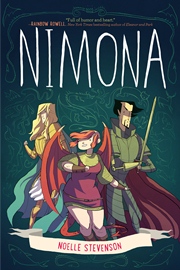
 Michael Ziegler (
Michael Ziegler (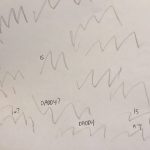


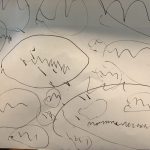
 Caroline Thompson (
Caroline Thompson (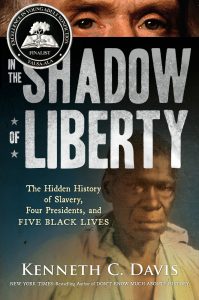 I used to think that nonfiction was not my thing. But I’m a librarian, so I have to make it my thing in order to best serve my students and staff. Still, I often felt like I was twisting my own arm while reading nonfiction.
I used to think that nonfiction was not my thing. But I’m a librarian, so I have to make it my thing in order to best serve my students and staff. Still, I often felt like I was twisting my own arm while reading nonfiction. Bethany Bratney
Bethany Bratney The other day, my eight year old was brimming with questions about the Revolutionary War. As I went through each, I found myself using vocabulary that he needed me to explain, like alliance–after which he quickly said, “Oh, I get it! My buddy is my alliance on the playground.”
The other day, my eight year old was brimming with questions about the Revolutionary War. As I went through each, I found myself using vocabulary that he needed me to explain, like alliance–after which he quickly said, “Oh, I get it! My buddy is my alliance on the playground.”
 Lauren Nizol (
Lauren Nizol (
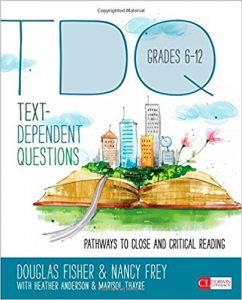 I teach close reading strategies for fiction and informational reading. According to Fisher and Frey,
I teach close reading strategies for fiction and informational reading. According to Fisher and Frey,  Amy Gurney (
Amy Gurney ( Strong words, right? Whenever I see the words hate and reading this close together, my skin crawls.
Strong words, right? Whenever I see the words hate and reading this close together, my skin crawls.